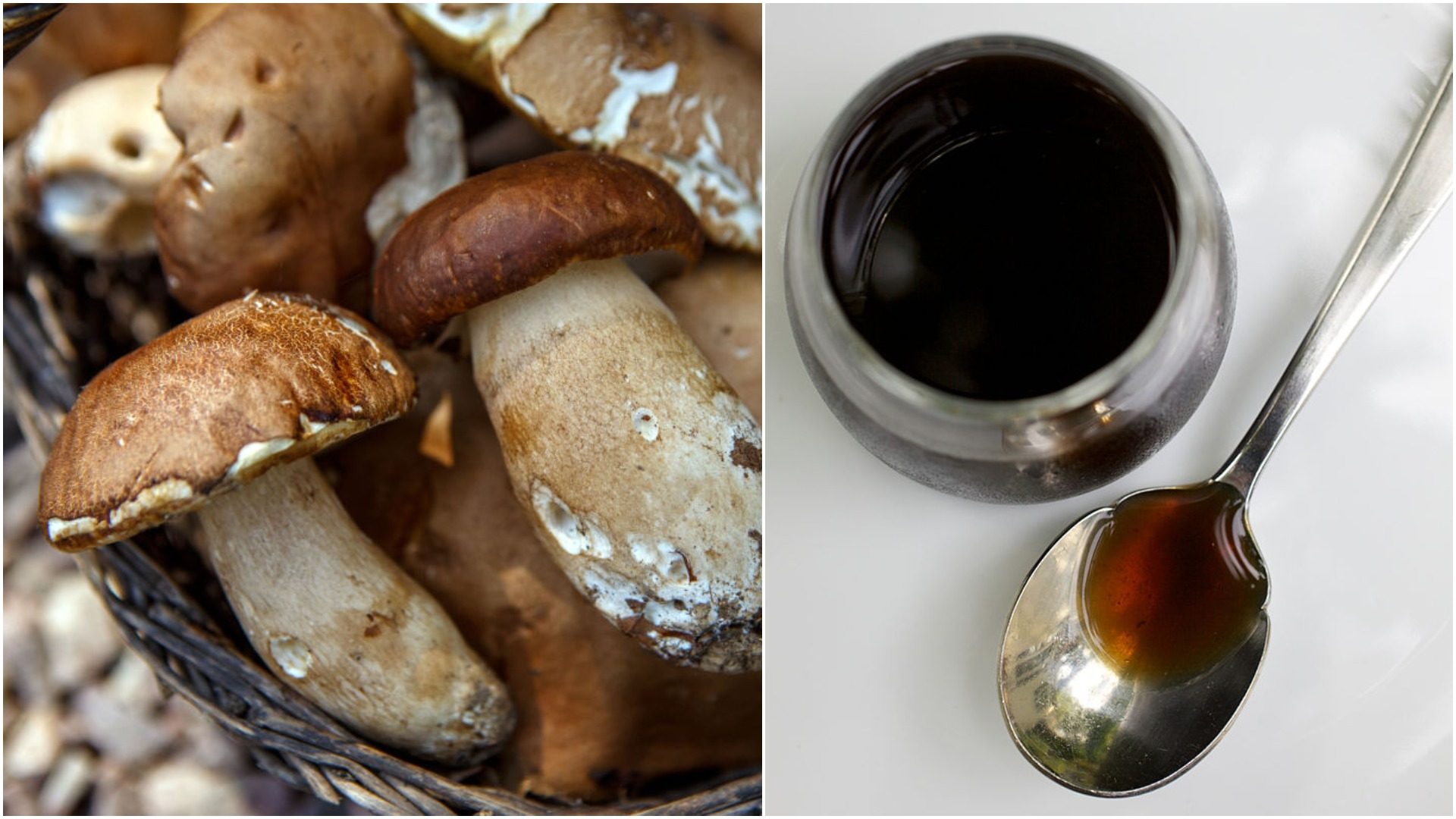Mushroom Ketchup Is The Umami Bomb You've Been Searching For
This old-timey condiment is worth revisiting, and it's easy to make at home.
A few weeks ago, I shared with you all the wonders of cucumber ketchup, and I undoubtedly changed a lot of your lives. (You're welcome.) Just in case you somehow forgot all of the crucial wisdom I imparted that day, a brief refresher:
- "Ketchup" is the Methuselah of condiments, created 2,000 years ago as a way to preserve all sorts of foods, not just tomatoes.
- All varieties of ketchup prospered until Heinz began selling a tomato-based ketchup in 1876, quickly casting all the other equally (if not more) delicious ketchups into near obscurity. Rude.
- Before tomato ketchup dominated the game, various ketchup sauces were made by heavily salting foods like fruits, vegetables, and nuts to extract their liquids, blending with spices and vinegar, and boiling the mixture down to a concentrated paste of intense flavor that could be preserved indefinitely.
- These forgotten ketchups of yore deserve the spotlight, which I am more than happy to shine upon them.
My cucumber ketchup recipe is the sort of bright and acidic condiment that livens up simple, mild-flavored foods like fish, chicken, or grilled vegetables. But this mushroom ketchup, adapted from a 19th-century recipe, is a different animal. Mushrooms are downright umami bombs that can't be quieted, no matter what other ingredients enter the equation. Mushroom ketchup is meant to be splashed upon well-seared steaks and thick medium-rare burgers, doused onto tender lamb shanks and meaty chops, stirred into soups, whipped into dip, and participate in any other exciting kitchen experiments floating around in your own brilliant brain. Mushroom ketchup is back in action, baby.
Mushroom Ketchup
- 1 1/2 lbs. mushrooms (preferably cremini, shitake, or anything wild, though white button mushrooms will work just fine)
- 1 Tbsp. kosher salt
- 2 bay leaves
- 2 oz. dried mushrooms (like porcini)
- 1 1/2 cups boiling water
- 1 large or 2 medium shallots, peeled
- 2 large cloves garlic
- 1 tsp. freshly grated ginger
- 1/2 tsp. freshly ground black pepper
- 1/2 tsp. cayenne pepper
- 1/4 tsp. ground cloves
- 1/2 cup port or dry white wine
- 1/2 cup sherry vinegar
Use a damp cloth to wipe any visible dirt off the mushrooms, then put them into a blender or food processor with the salt and bay leaves. Pulse until the mushrooms are ground into small bits, then let sit at room temperature for at least one hour to draw out the liquids. (Alternately, you can refrigerate the mushrooms overnight.)
Soak the dried mushrooms in boiling water for one hour until soft. Use a spoon to transfer the rehydrated mushrooms to the chopped ones in the blender/processor, then pour in the soaking liquid through a fine mesh strainer, taking care not to add any dirt or sediment the mushrooms may have expelled. Add the remaining ingredients and puree until smooth.
Pour the mushroom mixture into a large saucepan and set over high heat; when it begins to bubble, reduce the heat to low and simmer, uncovered for one hour, stirring occasionally.
Set a fine mesh sieve over a large bowl and pour in half of the hot mushroom ketchup. Use the back of a spoon to press the ketchup through the sieve, then repeat with the remaining ketchup. (Alternatively, you can do this with a food mill.) Discard any leftover solids. If you'd like a thicker ketchup, you can return the mixture to the pan and continue simmering for another 15-30 minutes. If not, you can go straight to the next step.
Let the mushroom ketchup cool for about 10 minutes, then taste for seasoning, adding additional spices, salt, or vinegar as you like. Pour the ketchup into a glass jar or bottle and keep refrigerated for up to three months.
How to use mushroom ketchup
Mushroom ketchup can be served with steak, poured on top of burgers, drizzled onto lamb shanks and other meaty chops, stirred into soups, and added to dips and salad dressings. Let us know of any other uses you find for this versatile condiment.
